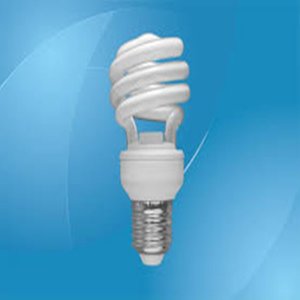What is the full form of CFLCFL: Compact fluorescent lampCFL stands for compact fluorescent lamp. It is an energy-saving lamp that consumes less power than old incandescent lamps. It consists of a glass tube and two electrodes. The glass tube contains a mixture of argon gas and mercury vapor, and its inner surface has a phosphor coating. 
From where did they originate?Although compact fluorescent lights are thought to be a relatively new technology, this particular form of bulb has been in development for more than a century. Circline and U-bent bulbs, forerunners of the CFL as it is known today, were both developed to shorten the overall length of fluorescent lamps. Edward Hammer, a General Electric engineer, created the contemporary CFL, but it was not manufactured at the time because of the high cost of production. Philips was the first company to mass-produce a screw-in base compact fluorescent bulb in 1980. The advancement of technology has continued for the past 30 years. The CFLs of today are smaller, generate more light per watt, warm up faster, have greater light quality, and are far less expensive than those of the past. How a CFL worksCFL has a different mechanism to produce light than incandescent lamps. In an incandescent lamp, the electric current passes through a wire filament. It heats the filament, and the filament glows to produce light. In CFL, the current passes through the tube containing the mixture of argon gas and mercury vapor. The current activates the mercury vapor, which produces ultraviolet light. The ultraviolet light then excites the phosphor coating on the inside of the tube, which produces visible light. When compared to incandescent bulbs, CFLs use somewhat more energy at the beginning but use roughly 70% less energy when the electricity starts flowing. The ballast of CFL assists in "kick start" the CFL and regulates the current once energy begins to flow. Further, CFLs take longer than other lights to fully illuminate since this entire process normally takes 30 seconds to 3 minutes to finish. Types of CFLCFL can be of two types:
Integrated: In an integrated CFL, the tube, the electronic ballast, and the bayonet fitting are combined in one single unit. Non-integrated: In a non-integrated CFL, the electronic ballast is permanently installed in the luminaire. It is not combined with the bulb, so only the bulb is needed to be changed at its end of life. Benefits of CFLEfficient: It uses 60-80% less energy than incandescent lamps. Durable and Cost-effective: It lasts more than ordinary bulbs and consumes less electricity, so it is less expensive in the long run. Eco-friendly: It helps reduce CO2 emission as CFL causes less CO2 emission as compared to an incandescent lamp. Versatile: CFLs are highly compatible and versatile. They come in a variety of shapes, sizes, and powers to suit different home decors and purposes. You can also easily install them in a variety of light fixtures like table lamps, ceiling lamps, dimmer lamps, etc. Produces less heat: It produces less heat as most of the energy is converted into visible light, so very less converts into heat.
Next TopicFull Form
|
 For Videos Join Our Youtube Channel: Join Now
For Videos Join Our Youtube Channel: Join Now
Feedback
- Send your Feedback to [email protected]
Help Others, Please Share










